Neanthe Bella Palm Care: Growing A Chamaedorea Elegans
The Neanthe Bella Palm is widely grown and sold in the trade as a tabletop palm. You’ll often see it tucked into dish gardens and mixed plantings as a soft, fluffy filler alongside kalanchoes, African violets, pothos, and more.
When I was an interior plantscaper years ago, we used this popular indoor palm frequently, primarily as a tabletop plant. Given time, it’ll grow into a full, bushy floor plant that tops out around 4′.
Botanical Name: Chamaedorea elegans. Common Name: Neanthe Bella Palm, Parlor Palm, Good Luck Palm
Neanthe Bella Palm Traits
Size/Form
Most indoor palms—like the Kentia, Bamboo, and Areca—are floor plants. Thanks to its compact size, the Neanthe Bella fits nicely into smaller spaces, such as tables, desks, and counters.
You’ll usually find it sold as a tabletop plant in a 6″ pot, standing about a foot tall. The largest one I’ve seen was in a 12″ pot and around 4′ tall, making it more of a low, bushy floor plant at that size.
Growth Rate
Slow, especially in low light.
Uses
Tabletop and low, bushy floor plant. Small ones are used in dish gardens and terrariums.
Neanthe Bella Palm Care Guide
Light Requirements:
Neanthe Bella Palms grow best in moderate, bright, indirect light. Be sure to keep them out of direct sun, which can scorch the fronds.
They can tolerate lower light, but growth will slow even more. If your palm starts looking a little pale or the fronds feel less sturdy, it’s probably in need of more light. During the darker winter months, you may need to temporarily relocate it to a brighter spot to keep it happy. Yours is likely growing near a wall or in a corner, so give it a turn every 3–6 months so it receives light on all sides and grows evenly.
I live in sunny Arizona, and with all the windows in my home, my houseplants enjoy plenty of natural light. If your natural light is limited, a basic full-spectrum grow light can be effective in keeping your palm healthy throughout the year.
Watering
Average to low. I water when the soil is halfway dry, about every 7-14 days in summer. It requires less water in lower light conditions and in the cooler, darker winter months. I use a soil moisture meter to tell me when my plants need water—it’s a real time-saver when you have over 75 houseplants and don’t want to stick your finger in every pot!
I can’t give you an exact watering schedule. Adjust the frequency according to your plant’s pot size, soil mix composition, time of year, and your home’s environment. You want a happy medium with this plant, not bone dry or soggy wet. The smaller the pot, the more often it will need watering. And, I always use room-temperature water for my plants.
The tips of this plant will brown if you have a high concentration of minerals in your water. Over time, tap water can lead to salt buildup, which often shows up as brown tips or edges on the leaves. If your tap water is high in minerals, switching to filtered water can help. I use a tankless reverse osmosis system in the kitchen that adds beneficial minerals back in, and it’s what I use to water all of my indoor plants.
You might be interested in this beginner’s guide to watering indoor plants.
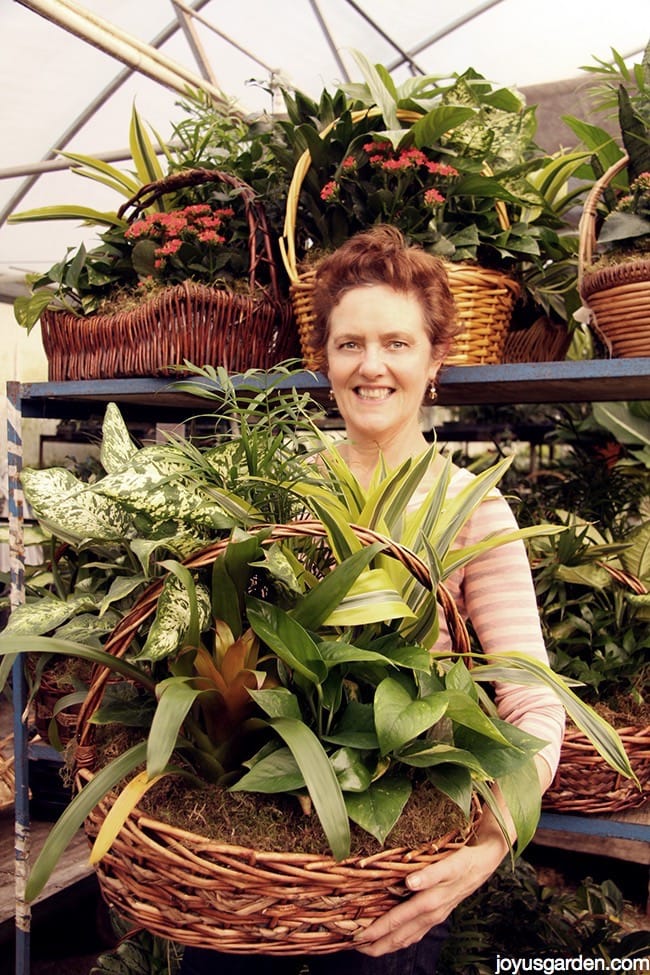
Temperature
If your home feels comfortable to you, your houseplants will likely feel the same. Just keep your Neanthe Bella Palm out of the direct path of cold drafts, AC vents, or heat sources.
Humidity
In their natural habitat, these tropical plants grow in high-humidity environments. Fortunately, they’re quite adaptable and can handle the drier air in our homes fairly well. That said, the dry indoor air can cause brown tips on the leaves over time.
If your home tends to be dry, you can try running a small tabletop humidifier when the humidity levels drop. Misting a few times a week can help give your palm a boost. Another easy option is to place the pot on a pebble tray or saucer filled with water—make sure the bottom of the pot sits above the waterline, not in it. Grouping plants can also help.
Fertilizing
Spring and summer—the active growing season—are the best times to fertilize your palm. If you live in a temperate climate with a longer growing season, early fall is fine too. How often you feed depends on the type of fertilizer you’re using and the climate zone you’re in.
I live in Tucson, AZ, where the growing season lasts for several months, so I feed my houseplants about seven to eight times a year. If you’re in a cooler climate, three to five times a year might be all your plant needs.
I rotate between a few fertilizers for my indoor plants—Grow Big, Liquid Kelp, and Maxsea or Sea Grow—and use them one at a time, not mixed together. I usually feed monthly and follow the directions on the label.
Fertilizing too often or using excessive amounts can cause salt buildup, leading to root and leaf burn. You’ll notice this as brown edges or spots on the leaves. If you’re feeding more than three times a year, start with a half-strength solution to be safe.
Skip the fertilizer in late fall and winter—your plant’s not actively growing then. And always avoid fertilizing a stressed plant, especially if it’s bone dry or waterlogged. Water it, then fertilize on the next cycle.
Soil
These palms thrive in a well-draining, chunky soil mix that’s also rich in organic matter. When it’s time to repot mine, I’ll use a blend of about 2/3 high-quality houseplant potting mix (I use Happy Frog and Ocean Forest) and 1/3 DIY succulent and cactus mix, which includes coco chips, coco peat, and pumice for extra drainage. I also like to toss in a few handfuls of compost for a little nutrient boost.
If you want to keep it simple, an indoor palm or cactus mix works just fine—make sure it drains well and doesn’t feel too heavy or compacted.
Repotting
Due to its slow growth, repotting isn’t needed yearly; every three to five years should do it. Spring and summer are the best times to repot.
Increase one pot size from its current pot – for instance, from a 6″ pot to an 8″ pot. Make sure there’s at least one drainage hole on the bottom of the pot so excess water can readily flow out, preventing root rot.
More information: when & why to repot a plant, plus a general repotting guide.
Pruning
Not much pruning is needed. Like all palms, the Neanthe Bella will occasionally get yellow or brown leaves—trim them off at the base of the stem. Since this plant grows densely, the upper fronds can sometimes shade the lower ones, causing some of them to yellow and eventually turn brown. That’s just the nature of this plant; prune them off.
Propagation
The easiest way to propagate a Neanthe Bella Palm is by division. Remove it from the pot and gently separate it by hand, or use a clean knife if necessary. Stem and leaf cuttings won’t work with this one. Growers start them from seed, but that’s a slow and tricky process most plant lovers would rather skip!
Pests
This plant is susceptible to spider mites and may develop them, especially during the cooler months when the heat is turned on. We replaced many of these palms in offices because once the infestation becomes severe, it’s difficult to control. Keep an eye out for scale insects – mealybugs and hard shell scale.
Pet Safety
Good news! Neanthe Bella Palms are non-toxic to pets, according to the ASPCA.
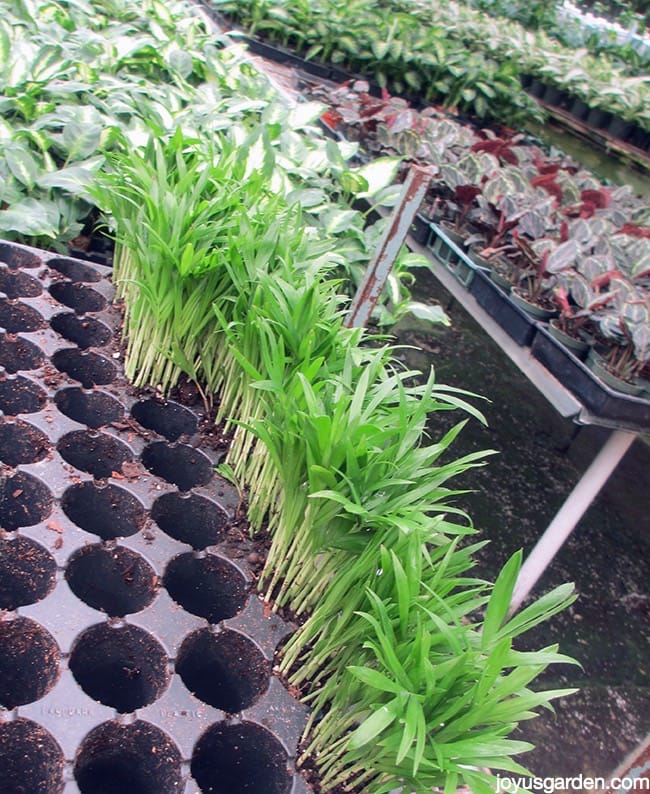
Neanthe Bella Palm FAQs
Is it normal for lower fronds (leaves) to yellow and die off?
Yes, yellow leaves at the bottom are normal. Since this plant grows densely, the upper fronds can shade the lower ones, causing some of them to yellow and eventually turn brown.
Can I grow it in a bathroom?
Sure thing—as long as the lighting conditions are sufficient. Bathrooms are great for Neanthe Bellas because of the added humidity, but they need bright, natural light to keep that lush foliage thriving. If your bathroom has a window, it could be a great spot.
What’s the difference between a Neanthe Bella Palm and a Bamboo Palm?
They’re a different species, but the genus is the same – Chamaedorea. Bamboo Palms are taller floor plants, whereas Neanthe Bellas are tabletop plants or low, bushy floor plants.
Why are the leaf tips turning brown?
Brown leaf tips are typically caused by dry air. I live in the desert, so quite a few of my indoor plants have them!
Why do the leaves on my Neanthe Bella Palm have specks or look dusty and dull?
Some houseplants are more prone to common pests than others, and this is one of them. Neanthe Bellas are susceptible to spider mites (tiny sap-suckers) that cause pale specks, dull-looking leaves, and a mottled appearance. If things progress, you may spot fine webbing.
Back in my interiorscaping days, I noticed these pests often appeared when the heat kicked on in the fall and winter—like they came out of nowhere!
How do I clean my Parlor Palm?
It’s best to give your beautiful indoor palm a gentle rinse in the shower or take it outside for a good hosing. I clean mine once or twice a year—it not only looks good, but clean leaves help the plant breathe and stay healthier.
A guide to cleaning houseplants.
Conclusion: Although it can be prone to spider mites, the Neanthe Bella is a low-maintenance plant that brings tropical vibes to your indoor space. With proper care, this popular houseplant will continue to look good for years to come.
Happy gardening,

Video Guide (warning: this video was filmed years ago!)
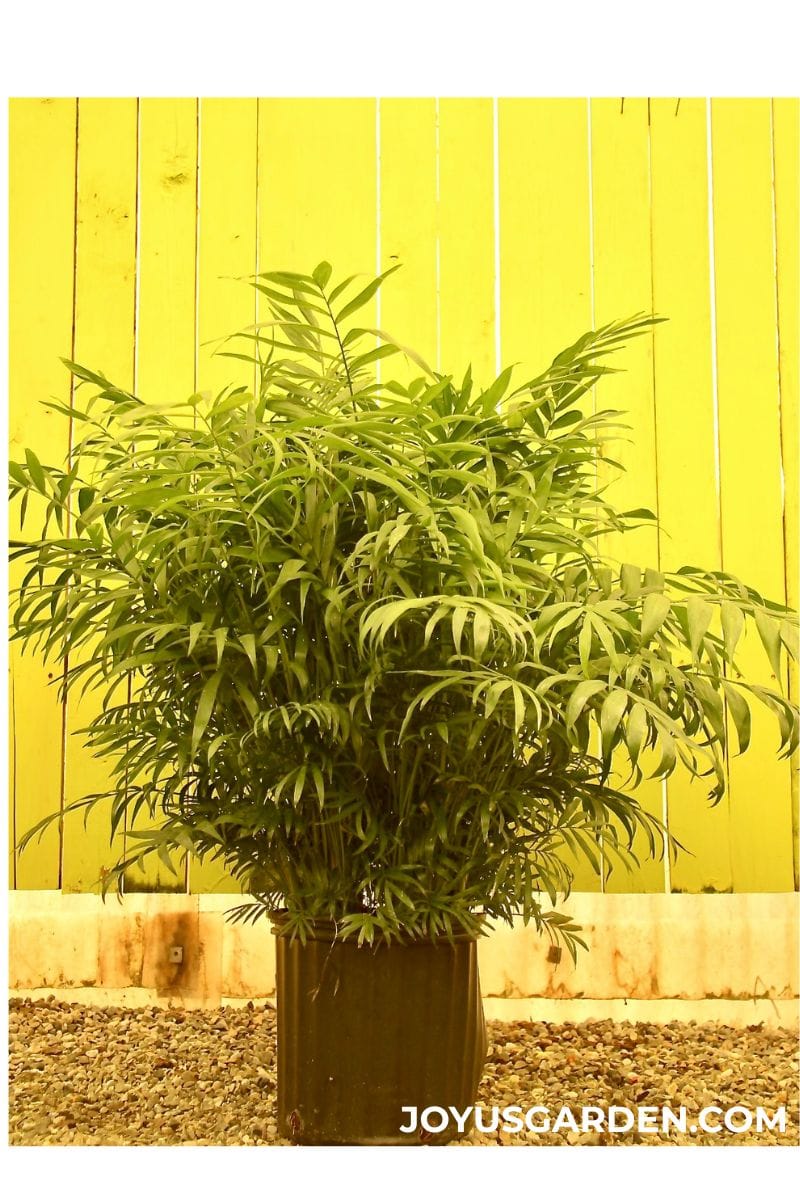

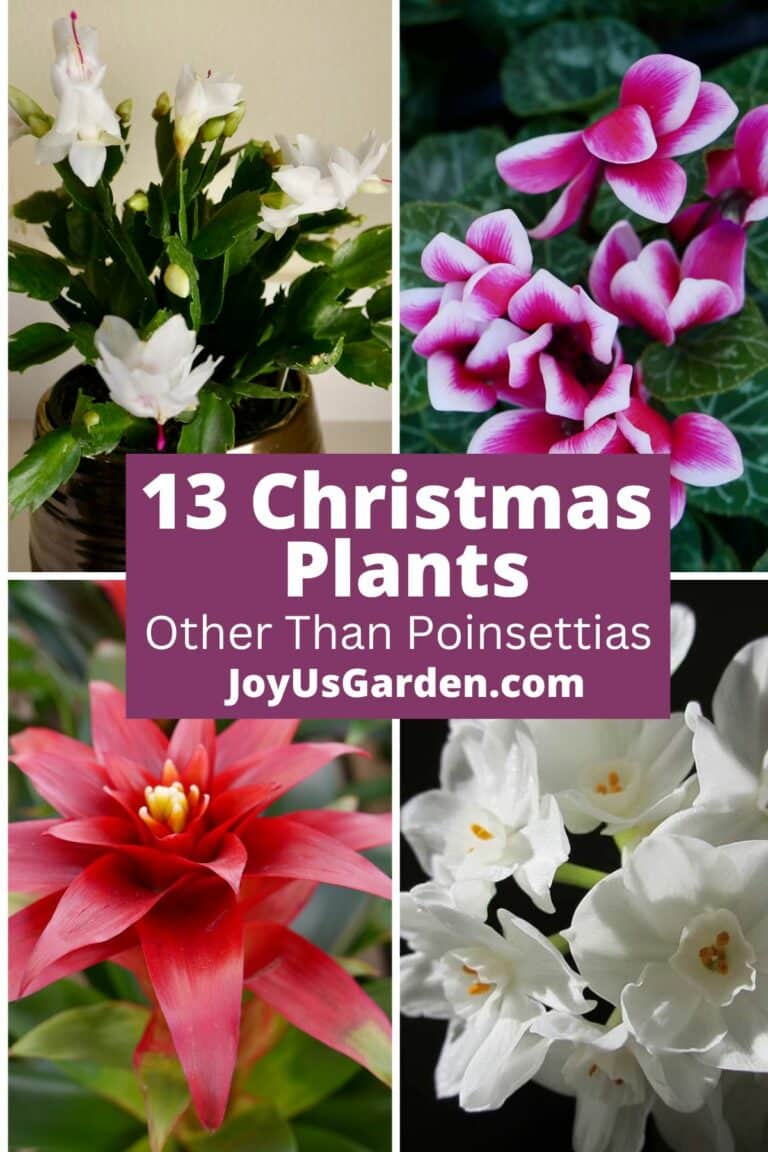
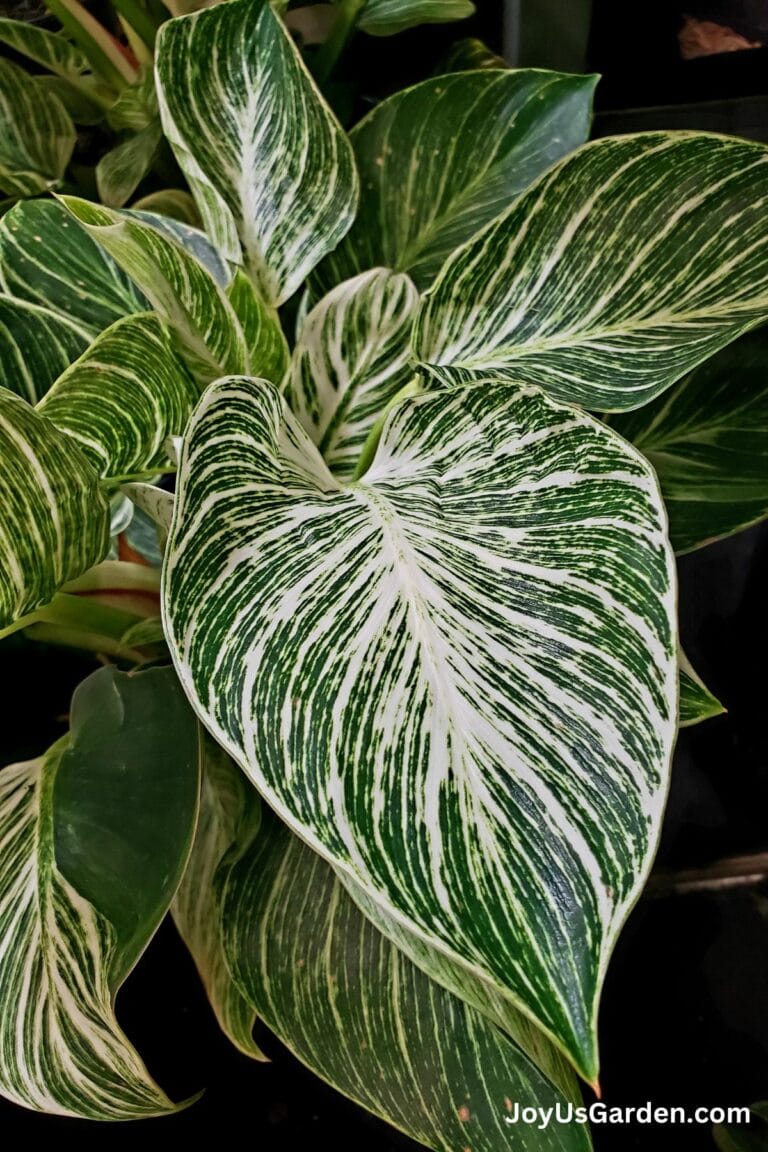
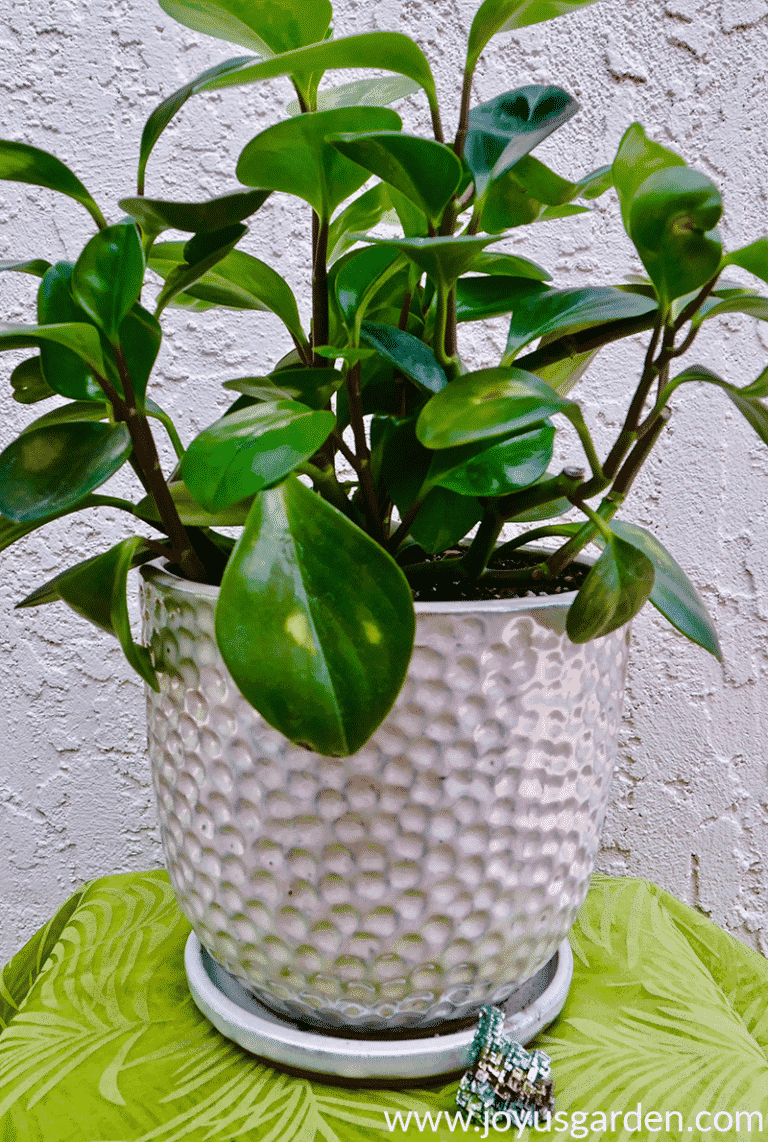
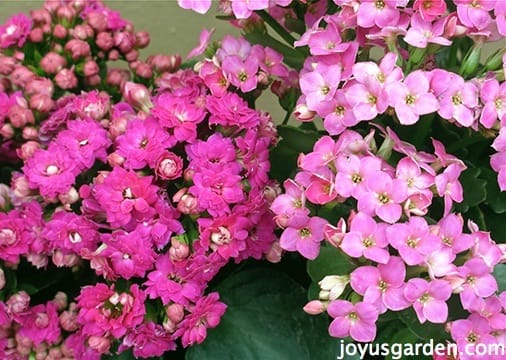
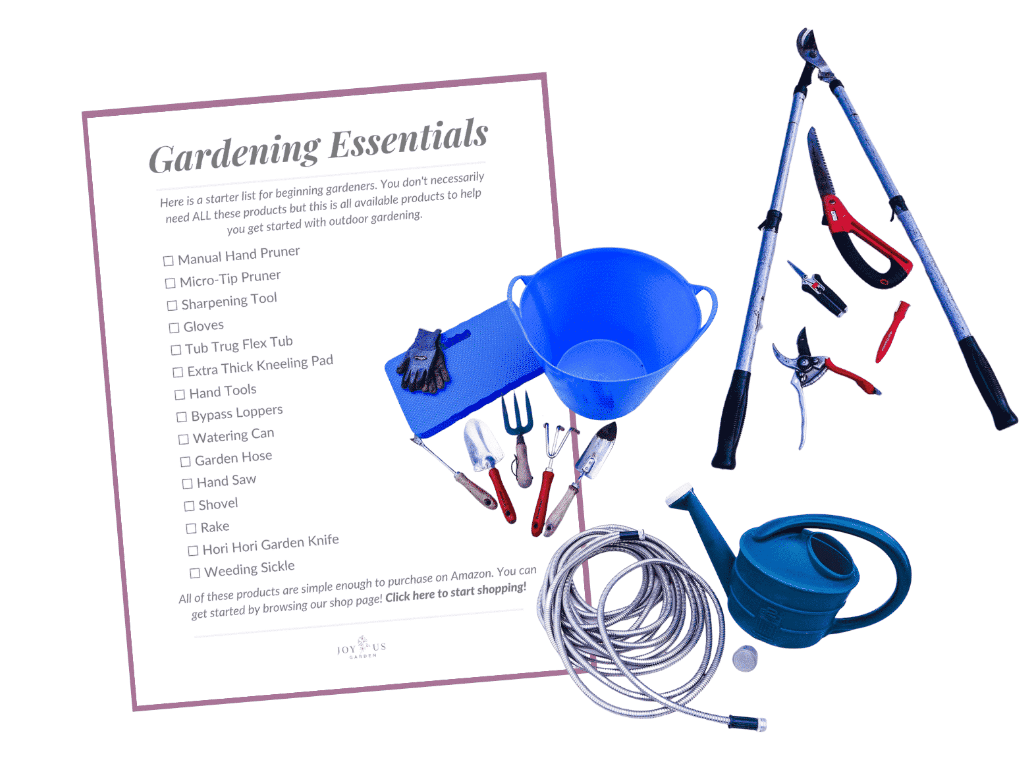
Thank you very much these care tips were very helpful. I have a Neanthe Bella and I needed some advice and I got it so thanks so much.
Glad to hear that Ethan. They’re really easy to maintain but just your eyes open for spider mites. It’s usually an issue at some point. Here’s a post & video on spider mites I did: https://www.joyusgarden.com/plant-pests-spider-mites-whiteflies/ Nell
I’ve had my neanthe belle for just over 3 yrs and it is rewarding me this winter with a few flower stalks! No tiny flowers just yet, but I’m sure they’ll pop out soon. These palms have become my favorite houseplant. They are so graceful & delicate looking and I’ve had many friends & family comment on how beautiful they are. The plant that’s flowering was purchased thru the mail, so didn’t know for sure what condition it would arrive in, but it was just fine & has been flourishing.
Oh that’s great to hear Doris. Many people have a harder time with them because of the issue with spider mites. I love it when palms flower indoors! Nell
Exactly how does a neantha belle aquire spider mites?
Melanie – A few ways: mites or their eggs can already be on the plant, they can travel from plant to plant, & they hitchhike in on us. Nell
I have this plant, the palm. It is in a pot I believe needs to be repotted to a bigger pot. Can I break them up into two so I have two separate pots.
Thank you for your time.
Cheers
Yes you can. I’ve never done it but was told it could change the appearance of the palm a bit. Nell
Could you use house plant liquid to mix with water also.
Yes Dan, you could. Depending on the strength of the fertilizer, you might dilute it to half strength. 1 fertilizing in spring & another in summer should do the trick. Nell
Can this palm be placed outside in the summer months? My front porch faces north and I live in the Midwest.
Hi Becky – Yes you can. With a north exposure, it shouldn’t get any direct sun. Just make sure to spray the entire plant off well with water before bringing it back indoors. Nell
Hi Nell –
The leaves on my neanthe bella seem to slowly be turning light brown.
I am guessing it has something to do with what has been inconsistent watering of late…..either too much or too little. . Only other guess is too much hot summer sun?
Would appreciate your advice.
Thanks so much
Hi Sarah – It could be a watering issue, usually from too much water. They don’t like to be in direct, hot sun & that’ll cause burn. It could also lack of humidity or spider mites, which NBPs are prone too. I don’t have a definite answer because I can’t see it but those reasons will give you something to go on. Here’s a piece on spider mites: https://www.joyusgarden.com/plant-pests-spider-mites-whiteflies/ Nell
I purchased a small neanthe bella palm and traveled with it while it was in a plastic bag. I am now home and need to pot it but am concerned about what soil medium I should use. I would appreciate your help.
Hi Sandra – You want a loamy, well drained mix for your NBP. Nell
I accidentally left my Bella palm outside in the scorching sun and now half the plant is colorless (albino). Should I clip those leaves off or let the plant heal?
Eve – Once the leaves are sunburned, they’re gone. Nell
Hi Nell, my palm’s new leaves have been growing with the sides curled inward (kinda like an upside down taco). Any idea why that is? Thanks in advance!
Corey – I’ve never seen that on a Neanthe Bella Palm before. Have you checked to make sure it doesn’t have spider mites? Nell
Hi Nell, I just checked, no spider mites.
How do I prevent spider mites?! I am now throughly disgusted and petrified!
Hi Jenny – Neanthebella Palms are very prone to spider mites. They’re tough to prevent especially when the heat comes on in winter. Keep your eye out for them & treat as soon as you see them. Nell